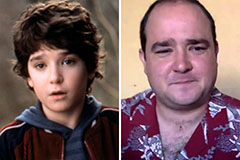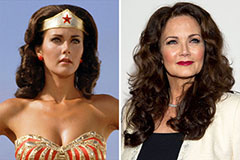The content directly below on the subject of Prevent Frozen Pipes is incredibly enlightening. You should investigate for yourself.

Cold weather can wreak havoc on your pipes, specifically by freezing pipelines. Right here's how to prevent it from happening and what to do if it does.
Intro
As temperature levels drop, the risk of icy pipes increases, possibly bring about expensive repair services and water damages. Understanding just how to avoid icy pipes is crucial for homeowners in cold climates.
Comprehending Frozen Pipes
What causes pipes to freeze?
Pipelines ice up when revealed to temperature levels listed below 32 ° F (0 ° C) for prolonged periods. As water inside the pipes freezes, it increases, taxing the pipeline walls and potentially creating them to break.
Dangers and damages
Icy pipelines can result in supply of water interruptions, residential or commercial property damage, and costly fixings. Ruptured pipes can flood homes and cause comprehensive structural damage.
Indications of Frozen Water Lines
Recognizing icy pipelines early can avoid them from rupturing.
Exactly how to determine frozen pipelines
Search for reduced water flow from faucets, unusual odors or noises from pipes, and visible frost on revealed pipelines.
Avoidance Tips
Shielding prone pipelines
Wrap pipes in insulation sleeves or use warmth tape to shield them from freezing temperature levels. Focus on pipes in unheated or external locations of the home.
Heating strategies
Maintain interior rooms adequately heated, specifically locations with plumbing. Open cabinet doors to enable warm air to circulate around pipelines under sinks.
Safeguarding Exterior Plumbing
Yard hoses and outside faucets
Separate and drain pipes garden hoses prior to winter season. Install frost-proof spigots or cover outside taps with protected caps.
What to Do If Your Pipes Freeze
Immediate activities to take
If you believe frozen pipes, keep taps available to relieve pressure as the ice melts. Utilize a hairdryer or towels taken in warm water to thaw pipelines gradually.
Long-Term Solutions
Structural adjustments
Think about rerouting pipes away from exterior walls or unheated areas. Add extra insulation to attics, basements, and crawl spaces.
Updating insulation
Buy high-quality insulation for pipelines, attic rooms, and wall surfaces. Appropriate insulation helps maintain regular temperature levels and minimizes the danger of frozen pipes.
Verdict
Protecting against frozen pipes calls for positive steps and fast actions. By comprehending the causes, indicators, and preventive measures, homeowners can secure their plumbing throughout cold weather.
5 Ways to Prevent Frozen Pipes
Drain Outdoor Faucets and Disconnect Hoses
First, close the shut-off valve that controls the flow of water in the pipe to your outdoor faucet. Then, head outside to disconnect and drain your hose and open the outdoor faucet to allow the water to completely drain out of the line. Turn off the faucet when done. Finally, head back to the shut-off valve and drain the remaining water inside the pipe into a bucket or container. Additionally, if you have a home irrigation system, you should consider hiring an expert to clear the system of water each year.
Insulate Pipes
One of the best and most cost-effective methods for preventing frozen water pipes is to wrap your pipes with insulation. This is especially important for areas in your home that aren’t exposed to heat, such as an attic. We suggest using foam sleeves, which can typically be found at your local hardware store.
Keep Heat Running at 65
Your pipes are located inside your walls, and the temperature there is much colder than the rest of the house. To prevent your pipes from freezing, The Insurance Information Institute suggests that you keep your home heated to at least 65 degrees, even when traveling. You may want to invest in smart devices that can keep an eye on the temperature in your home while you’re away.
Leave Water Dripping
Moving water — even a small trickle — can prevent ice from forming inside your pipes. When freezing temps are imminent, start a drip of water from all faucets that serve exposed pipes. Leaving a few faucets running will also help relieve pressure inside the pipes and help prevent a rupture if the water inside freezes.
Open Cupboard Doors
Warm your kitchen and bathroom pipes by opening cupboards and vanities. You should also leave your interior doors ajar to help warm air circulate evenly throughout your home.

Do you like reading up on Preventing and dealing with frozen pipes? Leave feedback down the page. We would be happy to hear your insights about this write-up. We hope to see you back again in the future. Loved our blog posting? Please quickly share it. Let somebody else check it out. We thank you for your readership.
Request A Quote
 Alfonso Ribeiro Then & Now!
Alfonso Ribeiro Then & Now! Bradley Pierce Then & Now!
Bradley Pierce Then & Now! Jason J. Richter Then & Now!
Jason J. Richter Then & Now! Lynda Carter Then & Now!
Lynda Carter Then & Now! Rachael Leigh Cook Then & Now!
Rachael Leigh Cook Then & Now!